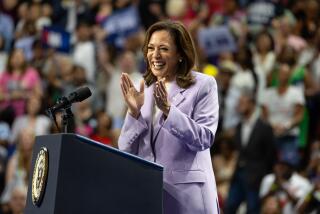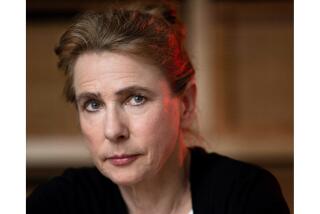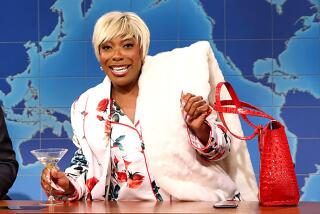Bringing the fire, or the ice
Forget about red state versus blue state, Prius versus Hummer, Wall Street versus Main Street or whatever other pop culture yardstick we’ve been using to measure the state of the nation recently. The real choice facing Americans this election year is much more simple: Cool or hot?
Let me explain. Three-score years ago, or thereabouts, some cats named Miles, Dizzy and Charlie brought forth upon this continent (OK, actually it was the Three Deuces club in New York) a new musical style, conceived in heroin addiction and dedicated to the proposition that white people can’t dance to fast rhythms. Bebop jazz was born, soon followed by its close cousin, beatnik culture. Together, they forged a new attitude that would define popular culture in the second half of the American Century.
That attitude, of course, was cool, or “cool pose” as the sociologists call it, and it has come back to haunt us this season, though no longer decked out in goatee and Jean Genet beret.
Sen. Barack Obama, according to the conventional wisdom’s typecasting, is Mr. Ice, the coolest aspirant since JFK to 1600 Pennsylvania Ave. Calm under fire, slow to anger, he exudes a judicious, cerebral coolness that his critics see as downright aloof and even (shiver!) elite. At the opposite end of the temperamental spectrum, Sen. John McCain is frequently depicted as Mr. Hothead, percolating with righteous, passionate convictions that either could lead to decisive executive branch action or, some fear, spark a fateful presidential temper tantrum. Jean GenetSo who will prevail in this campaign’s cultural sideshow: Joe Cool, a.k.a. “Chiller Than Thou” to his detractors, or the volcanic maverick known in high school as “McNasty”?
--
An ascendant cool
Funny thing is, cool and hot frequently have swirled together in the American cultural cocktail, like Worcestershire sauce spicing up a frosty Bloody Mary. You might say they’re codependents who need each other and are forever trading places in cyclical fashion. But at least since World War II, it’s been cool, not hot, that has been ascendant. More than simply a way of dressing or deportment, cool in its purest origins relates to notions of handling grace under pressure, the ability to stare into the abyss without flinching. Think of Joe DiMaggio at the plate, brushing off the pressure of his record hitting streak, or Miles Davis at the quivering instant before launching into a free-form solo.
Yale University art professor Robert Farris Thompson traced cool back to the spiritual philosophies of 15th century West African peoples such as the Yoruba. While African and European notions of cool shared an idea of “coolheadedness” and “sang-froid,” Thompson maintained that the African notion of cool went further and deeper. “In Africa,” he wrote, “coolness is an all-embracing positive attribute which combines notions of composure, silence, vitality, healing and social purification.”
In the United States, cool has been primarily associated with African American culture. In “Cool Pose: The Dilemmas of Black Manhood in America,” published in 1992, Richard Majors and Janet Mancini Billson described cool pose as “the presentation of self many black males use to establish their male identity.” “Cool pose is a ritualized form of masculinity that entails behaviors, scripts, physical posturing, impression management, and carefully crafted performances that deliver a single, critical message: pride, strength, and control,” they wrote.
Cool gradually wove its way into the fabric of African American slave culture and its most distinctive cultural manifestation, the blues.
But cool couldn’t truly become Cool without Hot to provide a counterpoint. When bebop and the Beats invented postwar cool, they were rebelling against what they viewed as the stifling aesthetics and social rules of the time. As Dick Pountain and David Robins wrote in “Cool Rules: Anatomy of an Attitude”: “Post-war Cool was at least in part an expression of war-weariness, and it vehemently rejected the ‘hot’ nationalistic ideals that the Cold War and McCarthyism were stirring up in favor of a detached and cool-under-fire attitude that cared for neither president nor country.”
The Beats and beboppers turned their backs on both suburban conformity and the nationalistic ardor that caused Americans to embrace the bomb and opted instead for blank verse, bongos and reefer. Soon even squares were get- ting hip to the insouciantly laid-back new vibe. “By the ‘50s, whites wanted to be Cool too,” Pountain and Robins wrote.
--
A defining trait
That’s how cool finally entered mainstream culture with Elvis Presley, Marlon Brando, James Dean, Paul Newman and, a few years later, the British Invasion, Pop art, etc. When Newman died last month, his eulogists inevitably cited his blue-eyed coolness as his defining trait as an actor and mourned its loss. “Newman was serene as Marlon Brando churned, decisive as Al Pacino anguished, calm as Dustin Hoffman jittered, scruffy as Warren Beatty preened,” wrote critic Eddie Cockrell in the the Australian. Doesn’t that sound like a guy you’d want running the Treasury Department right about now?
Cool had become as American as the Oldsmobile. Even Snoopy donned sunglasses and a turtleneck.
Today, America once again is sweating and huffing through an overheated age, dominated by fiery talk-radio hosts and a molten style of public discourse. We “flame” each other on the Internet. This fall, we’ve witnessed the partial “meltdown” of our entire financial system.
In short, current cultural conditions would seem to favor a rebirth of the cool. But there’s a hitch, Daddy-O.
As cool grew from a minority to a mainstream style, it attracted a wide variety of adherents and disciples, and it became more politicized and divisive as it was embraced by the 1960s counterculture. “The counter-culture embellished Cool with an extraordinarily diverse range of exotic beliefs ranging all the way from bomb-throwing anarchism and revolutionary socialism through Buddhism and Hindu mysticism,” Pountain and Robins wrote in their study in 2000. Pop culture caught the tenor of this new-school cool with movies like “Bonnie and Clyde.”
During the ‘70s and ‘80s, cool became further associated with glamorizing lawlessness and violence, at least in the minds of cultural conservatives. Punk rock’s snarling contempt for bourgeois values and hip-hop’s bling-flaunting, pistol-packing statements of purpose turned as many people off as on.
--
The ‘silent majority’
That triggered a conservative cultural backlash (“Rocky,” the “Dirty Harry” films) and allowed politicians such as Richard Nixon to claim that the cool kids were really flaming radicals out of step with the “silent majority.” Some McCain supporters are taking a similar tack, trying to connect Obama with cool’s incendiary, counterculture past by pointing to his brief association with Weather Underground(organization) co-founder William Ayers.
Will McCain’s backers succeed in painting Joe Cool as a secret red-hot subversive? Or will their strategy go down in flames, like one of those self-immolating Wagnerian operas?
“Some say the world will end in fire, / Some say in ice,” wrote poet Robert Frost. That’s American culture -- forever running hot and cool.
--
More to Read
The biggest entertainment stories
Get our big stories about Hollywood, film, television, music, arts, culture and more right in your inbox as soon as they publish.
You may occasionally receive promotional content from the Los Angeles Times.











